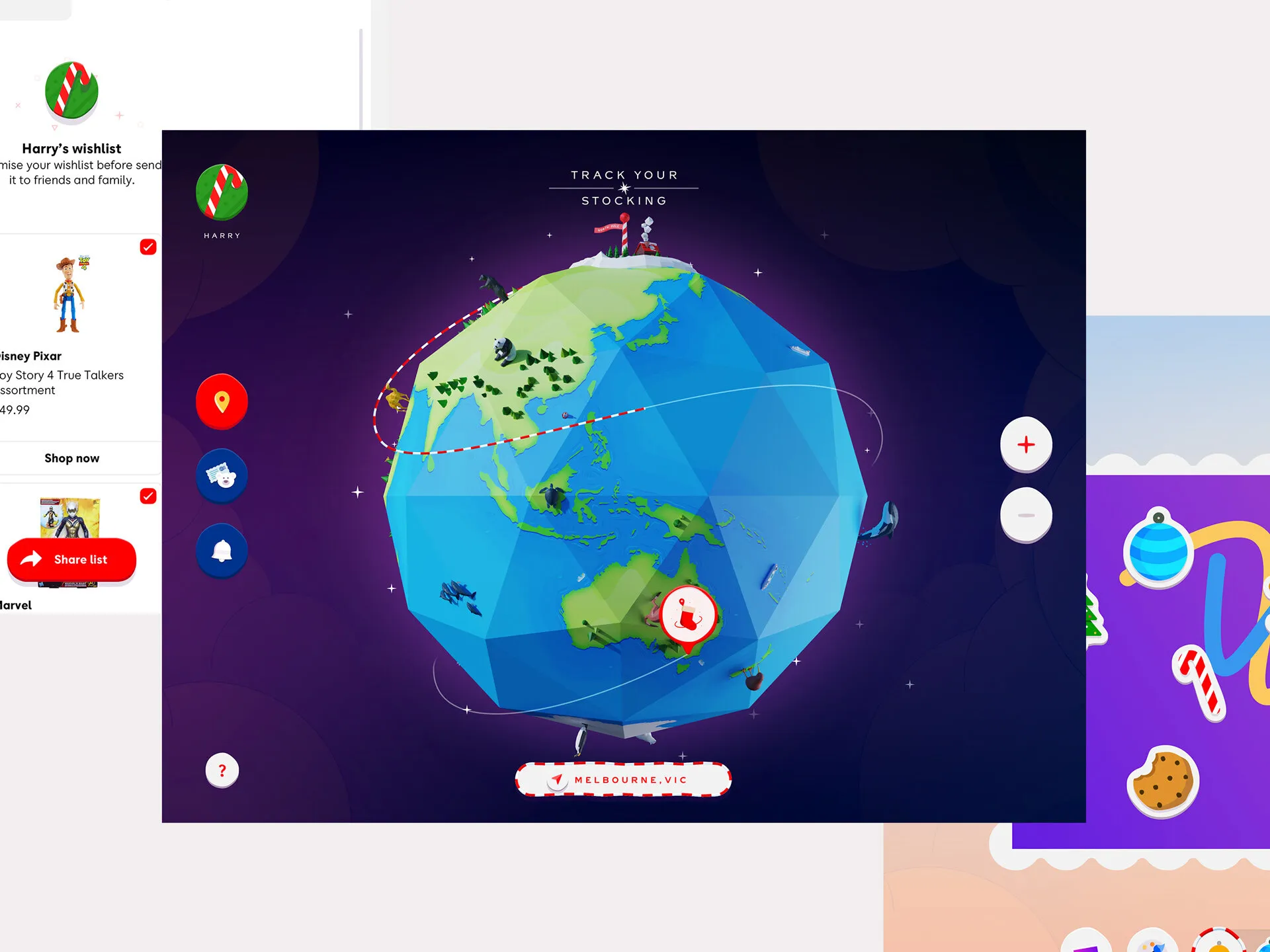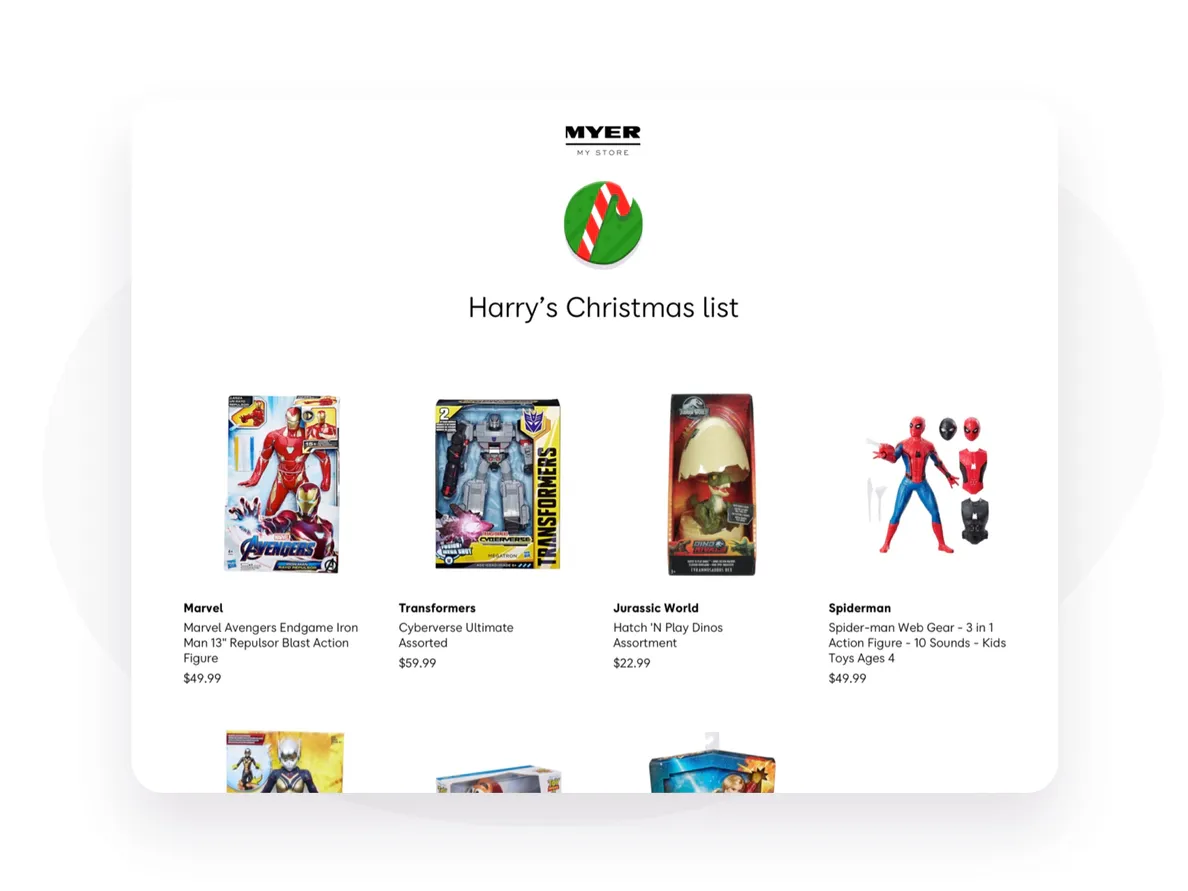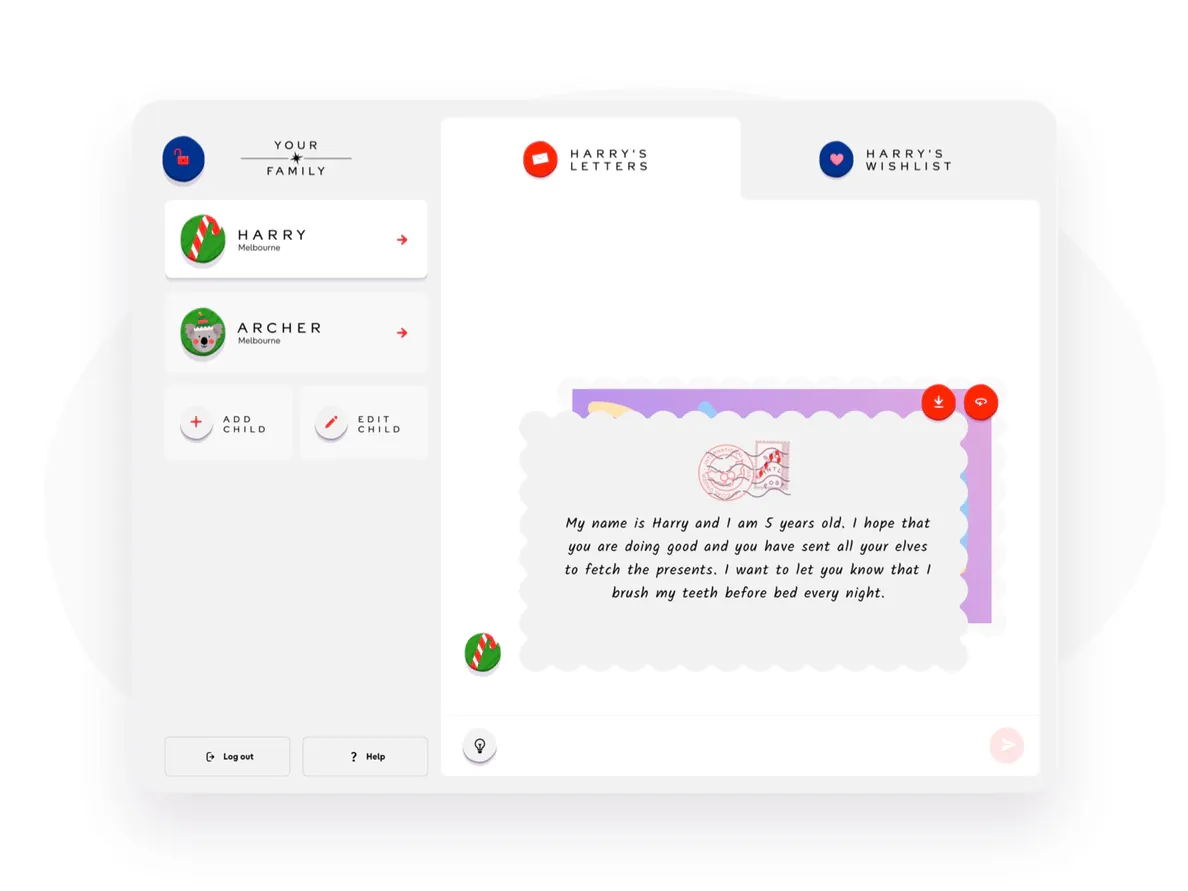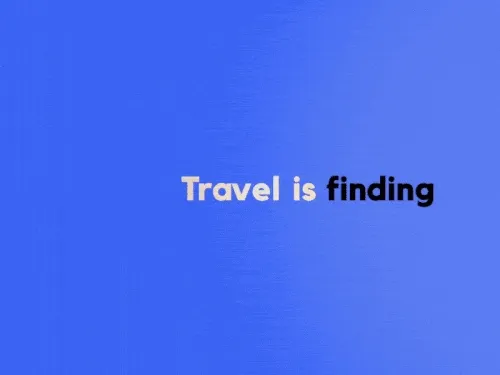
The Myer Global Positioning Stocking is a connected IoT product designed to ensure Santa can find millions of Aussie kids wherever they spend Christmas.
The smart stocking pairs with parents’ smartphones via the Myer Connect mobile app.
Kids can access a crafted web experience, primarily designed for tablets and adapted for ages 4 and up.

From there, kids can write letters to Santa, prepare their Christmas wish lists, and follow Santa’s journey on an interactive 3D planet.
Adults can access a private space in the web app to view and share their kids’ lists, helping to make the magic of Christmas even more real.


My role
As Technical Director, my role involved:
- Lead the technical build and team from early stage to production.
- Liaise with internal and external stakeholders to help with creative, scoping, prototyping, and client presentations.
- Design and prototype around feasibility and creative execution — pushing the boundaries of what was achievable technically, in the browser and using 3D rendering.
- Ensure scalability and resilience, making sure the platform and web app are fully operational in the days leading up to Christmas.
- Work on security to ensure location data, as well as kids’ and parents’ data, is safe.
Key results
- Hundreds of Christmas stockings sold.
- More than 800 letters sent by kids to Santa.
- More than 1,200 wish lists created, driving MYER sales.

Technology
To ensure security, scalability, and resilience of this always-on platform, we leveraged Amazon AWS infrastructure, focusing on the serverless stack and services such as Cognito, AppSync, Lambda, and Aurora Serverless.
Babylon.js delivered the 3D experience, while GSAP powered all 2D animations and interactions. To bring everything together, we used Vue.js as our main framework. We tuned GPU budgets, texture memory, and loading strategies to keep performance smooth on low‑power tablets.
One of the biggest challenges was making the experience run smoothly on tablets and usable for kids aged 4+ who might not read yet and rely on visual cues to navigate and interact. To make this possible, we worked closely with UX designers and tested early with kids of various ages.

